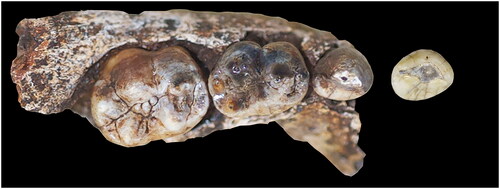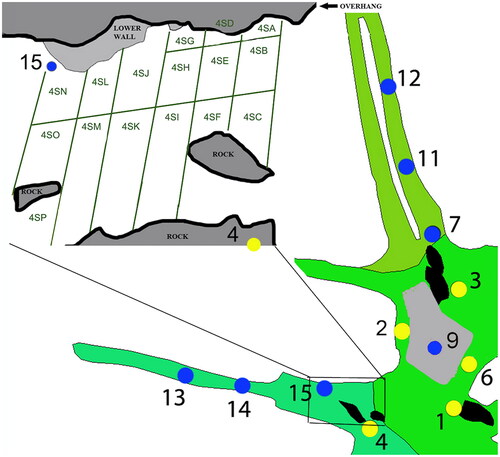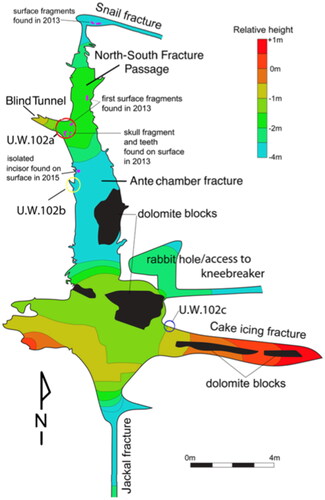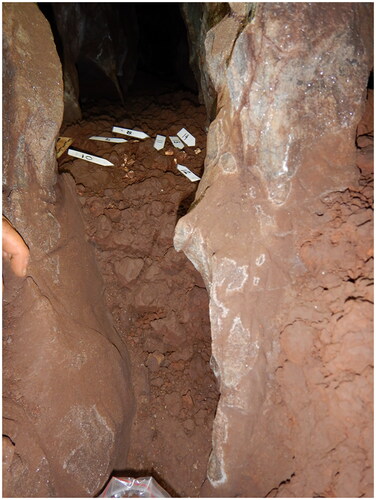Figures & data
Figure 1. (A) Overview of the Rising Star cave System, showing the two main chamber locations of Homo naledi material; (B) Detail of the Dinaledi subsystem, showing the multiple fossil deposits (from Elliott et al. Citation2021).
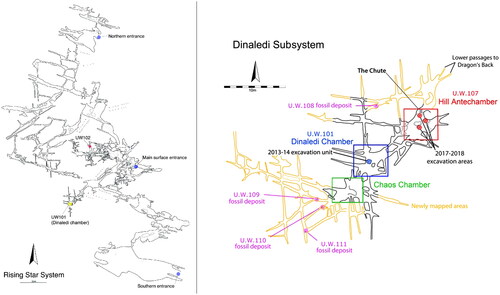
Table 1. Early juvenile individuals from Rising Star localities U.W. 101, U.W. 102, and U.W. 110.
Figure 2. E-JUV individual #1. Top row (left to right): Left maxillary M2; right M2. Bottom row: mandibular left M2, M1; right M1, M2.

Figure 3. Dinaledi Chamber (U.W. 101), with excavation areas noted by pin numbers. Area 2/9 (shaded grey) represents the primary excavation unit for the 2013–2014 field seasons.
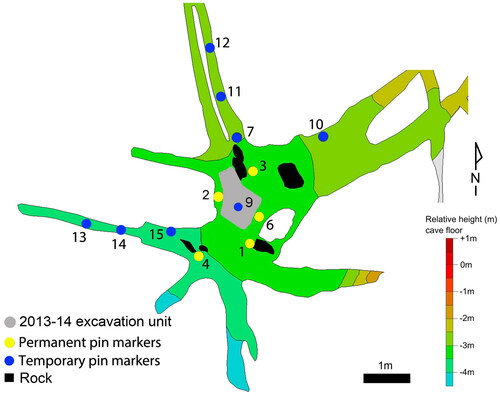
Figure 4. E-JUV individual #2. Top row (left to right): Left maxillary M2, M1; right dm2, M1, M2. Bottom row: mandibular left M1.
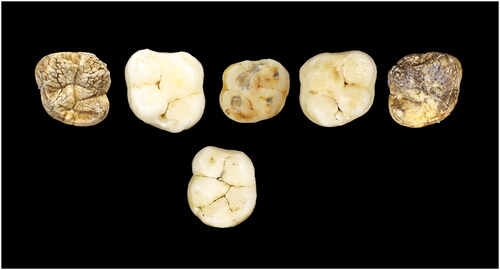
Figure 7. E-JUV individual #4. U.W. 101–1571 (top) and occlusal of U.W. 101–1571 (left) and U.W. 101–824 (right).

Figure 8. E-JUV individual #5. From left to right (top): maxillary LI2, RP4; (bottom): mandibular LI2, LC, ldm2, partial mandible with RP4.
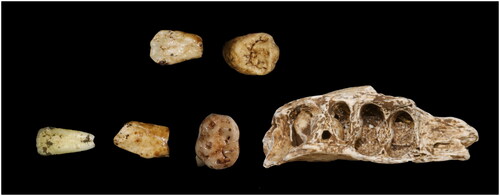
Figure 10. A (left). Schematic of the west wall region of the Lesedi Chamber, designated U.W. 102b showing Area 4, where U.W. 102b–178 was recovered and Area 2, where the remaining U.W. 102b hominin fossils were found. 10B (right). Image of west wall of Lesedi Chamber. White arrow points to where the U.W. 102b E-JUV hemi-mandible, teeth, and cranial fragments were recovered.
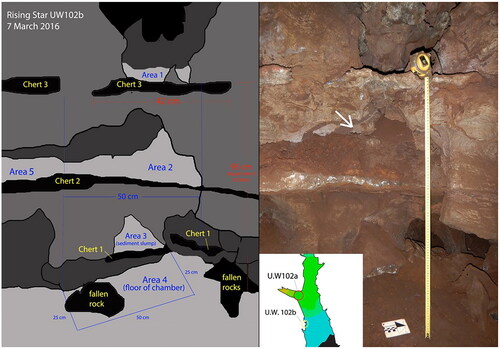
Table 2. Homo naledi individuals and their life stages by the fossil site area within the Rising Star cave system.
Table 3. Relative wear patterns of deciduous first molar, canine ,and second molar.


